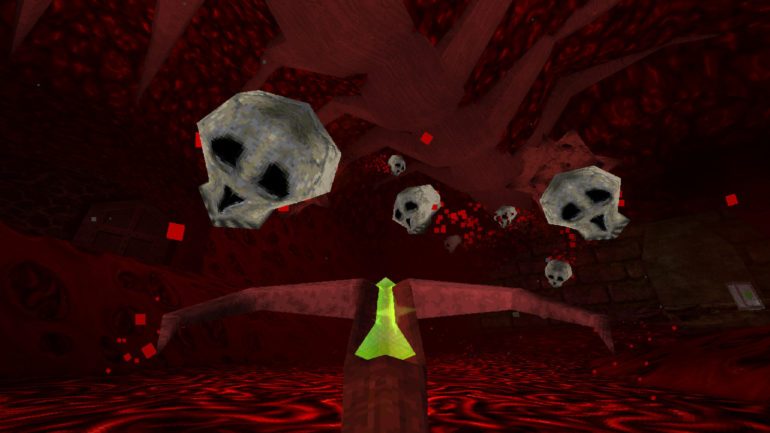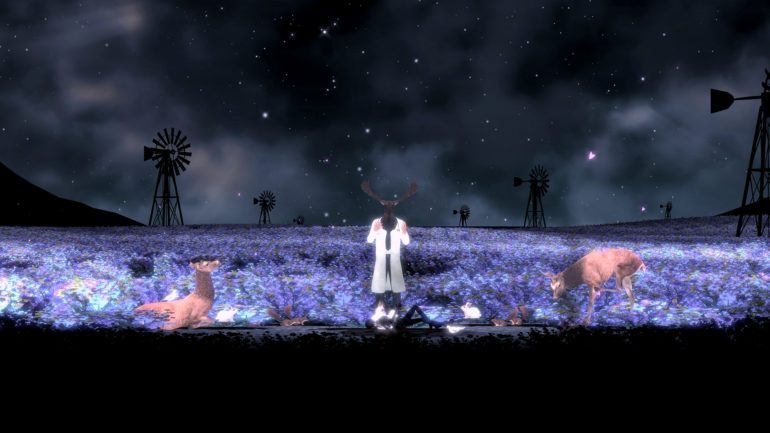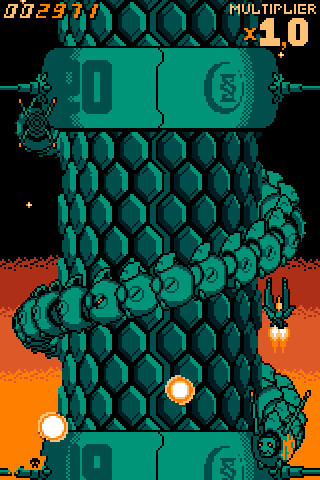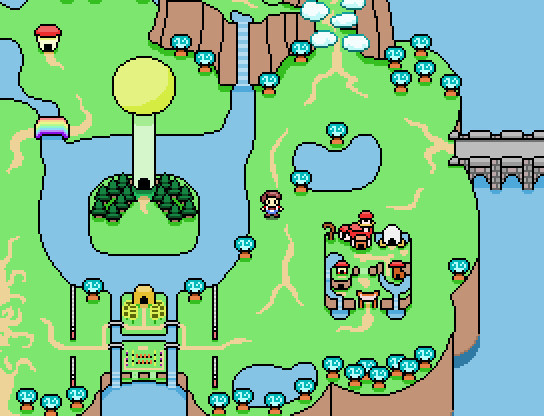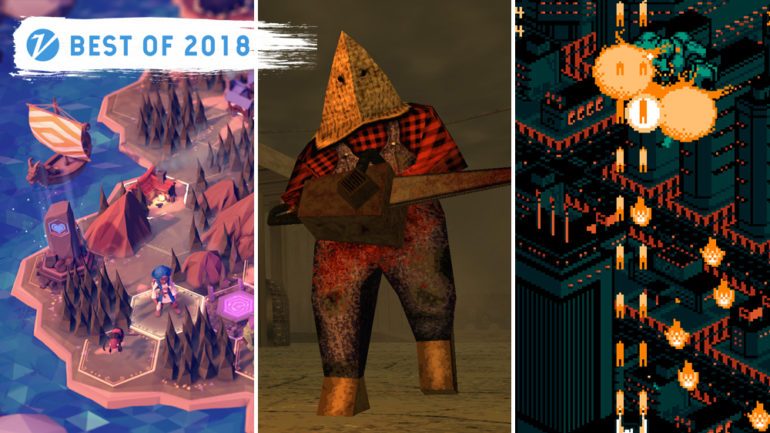5 Video Game Indie Stunners You May Have Missed This Year
By Steven T. Wright
LOS ANGELES (Variety.com) – Over the past ten years, as the market democratized and many boundaries to entry were shattered by changing conditions, the world of video games has become increasingly stratified. At the top, there are still the massive triple-A releases that demand billboards and headlines all around the world, aggregations of popular trends stitched together by mega-studios and propped up by the long-tail of penny-ante microtransactions. At the bottom, however, there are legions of passion projects, small-team love affairs that quietly gleam under the perpetual landslide of forgettable games that spill onto the service every week. Though it’s impossible to keep up with all of them – or to discern all the hidden gems from the merely competent – here are five great games that probably slipped under your radar this year.
“DUSK”
Anyone who yearns for the love screech of a 56k modem will find themselves well at home in David Szymanski’s “Dusk,” a blood-soaked tribute to early first-person shooter greats like “Doom” and “Quake.” Unveiled earlier this year in Early Access and released this month, “Dusk” eschews the plodding, stop-and-pop military simulation of “Battlefield” for the breakneck speed and fantasy physics of the genre’s early standouts. For example, jumping repeatedly as you run forward will build up your movement speed to ridiculous highs, a tactic known as “bunny-hopping,” and many opponents can be laid low by “strafing” sideways in circles around them to avoid their fire.
Unlike many indie nostalgia-trips, however, rather than wallowing in past glory, Szymanski is more interested in imagining a possible future for this mostly-abandoned breed of classic shooter. It might look and feel like an arena shooter, but “Dusk” thrives not only on throwing wave after wave of bizarre monstrosities at you, but using the terrain of the level itself against you, like dropping you in a claustrophobic corridor with five invisible monsters looking to claw you up. Like “Doom (2016)” before it, the game’s armory reflects a keen knowledge of old-school tactics, with each filling out a particular role, from the usual array of pistols and shotguns to a crossbow that shoots glowing bolts through walls. Its grimy aesthetic might make it look like it’s from 1998, but “DUSK” isn’t a relic for the aging LAN-set; if you’re up for a challenge, it’s the best shooter of 2018.
“THE MISSING: J.J. MACFIELD AND THE ISLAND OF MEMORIES”
Hardcore gamers might recognize the name of Hidetaka “Swery” Suehiro from the 2010’s divisive Twin Peaks-esque disasterpiece “Deadly Premonition,” the Japanese auteur remains mostly unknown to mainstream audiences, largely due to his heterodox style. That’s a shame, because while his latest effort exhibits much of the ramshackle charm of his previous work, it nails its purpose with far more confidence and poise than many other games in its style. On the surface, “The Missing” doesn’t seem like anything to write home about: a bare puzzle-platformer with a reliance on physics conundrums that sometimes feel ripped from a Flash game from a decade ago. As you run from left to right through its mysterious island, however, the nature of the extreme harm that protagonist J.J. goes through in search of her love interest Emily begins to reveal itself, delving into themes that most games prefer to leave unexplored. It’s far from a perfect game – especially the treacly voice-acting, which borders on parody at times – but if you give it a chance, this is one of the most forward-thinking games of the year.
“FOR THE KING”
As a devoted fan of tabletop RPGs like “Dungeons and Dragons,” I’m continually on the hunt for a video game that simulates the feeling of huddling around a table to save a world of make-believe from your devious “dungeon-master.” (Sure, there have been plenty of games emblazoned with the D&D logo over the years, but they focus on replicating the dice-engine that powers the game, rather than the shared experience it creates.) “For the King” isn’t quite the silver bullet that I was looking for, but it comes a lot closer than, say, “Neverwinter Nights.”
Just like in D&D, you and a few friends build a party of adventurers from individual “classes” and suit up to save a doomed kingdom from a mysterious affliction. Unlike most tabletop campaigns, however, “For the King” is a deeply tactical affair that demands a level of precision and system mastery that recalls dungeon-crawling “roguelikes” like “NetHack” and “Brogue.” And just like in a true roguelike, once you fail, it’s game over for that party, and you must start afresh with a new band of would-be heroes. Though the game’s reliance on pure chance can sometimes prove a bit galling, it managed to give my group of roleplayers a nice palate cleanser after a night of dice-rolling, and that makes it worthy of a look.
“ZERORANGER”
Sure, everybody’s played “Galaga” or “Space Invaders” but the shoot-’em-up (or shmup) genre has evolved a lot since then. As they fell out of favor with mass audiences, the shmup genre became increasingly niche, with rock-hard cult classics like “Radiant Silvergun” and “Ikaruga” revitalizing the form for those with enough patience to master their endless curtains of “bullet hell.” For the rest of us, however, there’s “ZeroRanger,” a short-but-sweet shmup released this year after almost a decade of development. Where most shmups do very little to initiate newbies into the ways of multiple sub-weapons and single-ship clears, “ZeroRanger” gives frequent feedback to the player, often in the form of koan-like interludes that feed into the game’s central theme of “enlightenment.”
The points that you score on each of your abortive runs against its screen-load of obstacles feed into a pool that unlocks “continues” that let you keep a run alive past your usual three-life limit. Though some might say it lacks content compared to other indie games, like many shmups, “ZeroRanger” is meant to be played again and again, until you can complete it with just a single continue, or even a single ship. While I’m not so sure that’s in the realm of possibility for me, it’s pulled me back into the clutches of a style of game I used to love, and that’s more than enough for a recommendation.
“JIMMY AND THE PULSATING MASS”
The cult-classic Japanese RPG “Earthbound” failed to set tills alight upon its release on Western shores in 1995, and its sequel “Mother 3” is only playable through a (much-acclaimed) fan translation. That said, the quirky send-up of American culture has become a sort of video game Velvet Underground, with many of the game’s fans releasing works that clearly draw from its bizarre blend of suburban ennui and gonzo humor, from “LISA” to the cultural phenomenon “Undertale.” With less than a hundred Steam reviews, Kasey Ozymy’s “Jimmy and the Pulsating Mass” might be the least-known of the latter-day entries in this nascent micro-genre, but JRPG fans shouldn’t sleep on this one.
From the chunky pixel aesthetic to its pained nostalgic tone, “Jimmy” is an unapologetic “Earthbound”-like, but it brings plenty of unique ideas to the fold. This is a deeply strange game, but not for the sake of an empty gimmick. You’re exploring the dream world of your eight-year-old protagonist, and the results are as weird and funny as you might expect; a world where mice try to date cats, clouds punch you with their rippling muscles, and a “shakedown” means a leather-jacketed goon literally shaking the money out of you. The 8-year-old protagonist has the ability to transform into his enemies through the power of empathy, which gives the game’s combat a great deal of tactical depth, with difficulty to match. If you can stand the scourge of random encounters, “Jimmy” is one of the most striking JRPGs in a while, and it definitely deserves a few more eyeballs.
